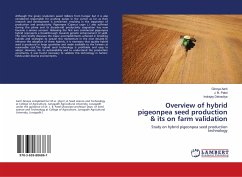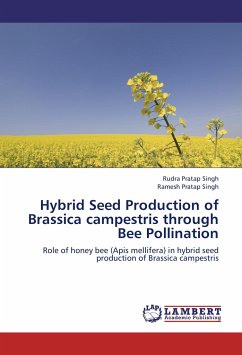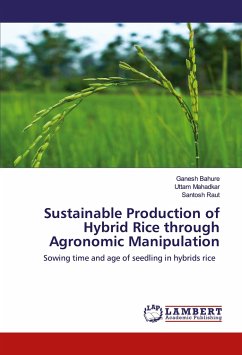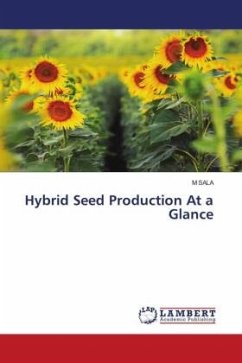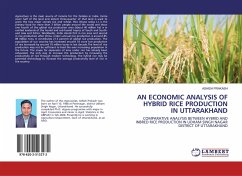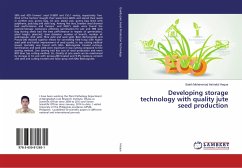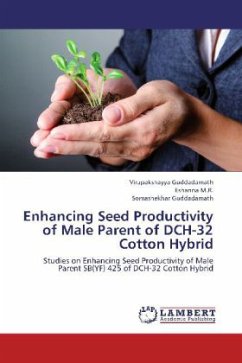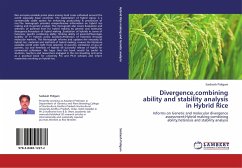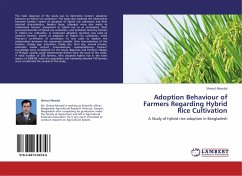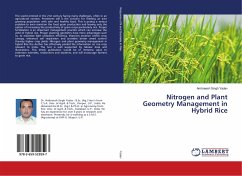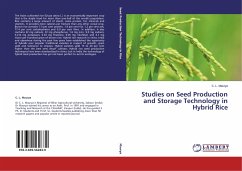
Studies on Seed Production and Storage Technology in Hybrid Rice
Versandkostenfrei!
Versandfertig in 6-10 Tagen
51,99 €
inkl. MwSt.

PAYBACK Punkte
26 °P sammeln!
The Asian cultivated rice (Oryza sativa L.) is an economically important crop that is the staple food for more than one-half of the world's population. Rice contains a large amount of starch, some protein, fat, minerals and vitamins. It provides more calories per hectare than any other cereal crop. Brown rice contains 7.5 per cent protein, 1.9 per cent fat, 1.2 per cent ash, 77.4 per cent carbohydrates and 0.9 per cent fibre. In addition, it also contains 32 mg calcium, 22 mg phosphorus, 1.6 mg Iron, 9.0 mg sodium, 0.214 mg potassium, 0.34 mg thiamine, 0.05 mg riboflavin and 4.7 mg niacin per ...
The Asian cultivated rice (Oryza sativa L.) is an economically important crop that is the staple food for more than one-half of the world's population. Rice contains a large amount of starch, some protein, fat, minerals and vitamins. It provides more calories per hectare than any other cereal crop. Brown rice contains 7.5 per cent protein, 1.9 per cent fat, 1.2 per cent ash, 77.4 per cent carbohydrates and 0.9 per cent fibre. In addition, it also contains 32 mg calcium, 22 mg phosphorus, 1.6 mg Iron, 9.0 mg sodium, 0.214 mg potassium, 0.34 mg thiamine, 0.05 mg riboflavin and 4.7 mg niacin per hundred gram of brown rice. Hybrid rice research in china, India and elsewhere during the past few years have established the superiority of hybrids over popular traditional varieties in respect of growth, grain yield and tolerance to stresses. Hybrid varieties yield 15 to 20 per cent higher than the best semi dwarf cultivars. Hybrid rice seed production techniques have been standardized in china, but in India the technology of hybrid seed production has yet not been perfect to suit its ecologies.



